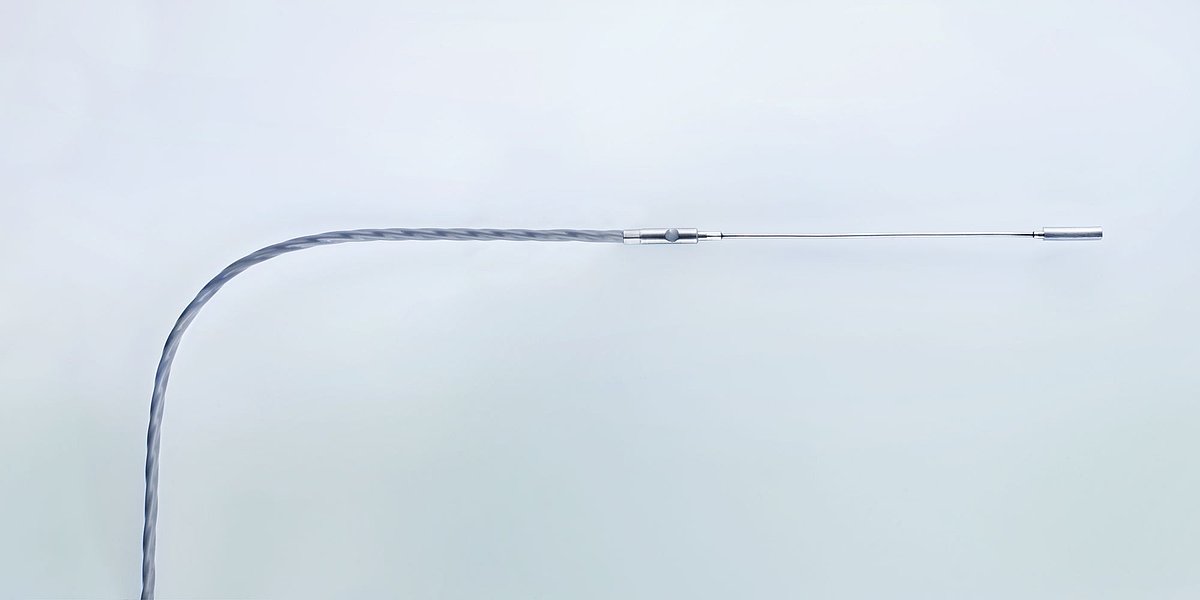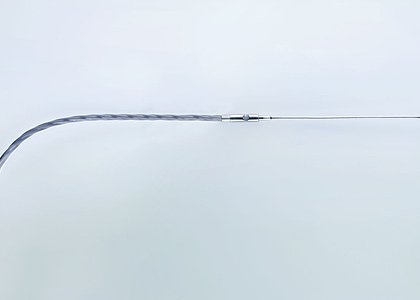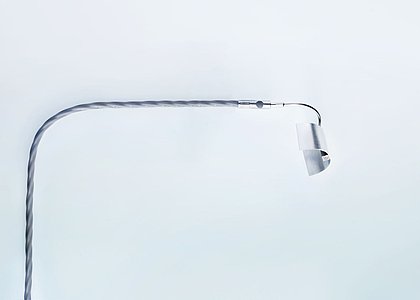At a glance
Product properties
- Operating temperature range -200°C to +800°C
- Flexible mineral-insulated line (MI)
- Protective pipe diameter from ø 1 mm
- Waterproof design (IP68)
Description
Sheathed resistance thermometers are extremely robust, mechanically stable and resistant to pressure and vibration. The measuring resistor is pressed firmly into a stainless steel sleeve filled with ceramic powder. The sleeve is extended to the required final dimensions with a flexible, mineral-insulated line (MI line). It is connected to the feed either with a cable transition sleeve (KÜH) with a diameter of ∅ 5.5 mm or by a firmly connected PTFE hose line. Due to their small diameters, these thermometers have very short reaction times and are suitable for hard-to-access, angled positions and narrow openings. They monitor the thermal conditions in gaseous and liquid media, in vessels, piping, apparatus and machinery, and in drive elements and brake systems. Installation is through a choice of thread of size M10x1 to G1“ or clamp screw connection.
Assembly variants
Standard sheathed resistance thermometer “crescent sensor”
In sheathed resistance thermometers, the sensor is pressed firmly into a mineral powder. They are therefore highly resistant to pressure and vibrations and can be produced from a diameter of 2 mm. The use of high-alloy stainless steel and the casting of the cable transition sleeve make the sensors corrosion resistant, so that they can be used to monitor hydroelectric turbines, for example.
Special construction sheathed resistance thermometer “winged sensor”
This construction is ideal for measuring the temperature on pipes as a contact sensor. Called a “winged sensor” due to its appearance, it consists of a thermometer, steel strip wings, insulating top and bottom section, shrinking tube insulation and the associated connectors.
The capillary temperature sensor has steel strip wings from the sides. Thanks to the flexible capillary tube, the sensor can be embedded directly into the milled welded sockets and welded firmly to the socket using the “sheet wings” at the sides. This guarantees the optimum thermal coupling. The sensor is then sheathed with ceramic fibre insulating shells and shrink-wrapped with a thick-walled polyolefin hose in order to rule out any influence from the ambient temperature.


